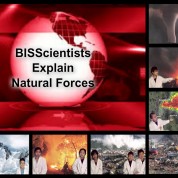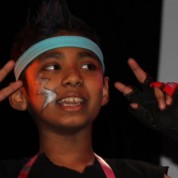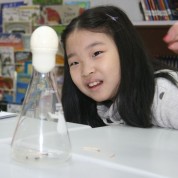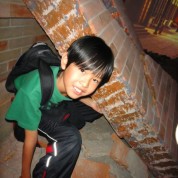Our Amazing Documentaries
About 3 weeks ago, we started inquiring into a natural disaster of our choice…and now we have completed our own science documentaries! It was a 5-step research journey to create the documentaries. The steps were: Choose one natural disaster that was interesting to us. Prepare a speech about the 4 big concepts (cause, impact, response and detection/prediction). To do this, we found sources of information, took notes and kept a reference list. Make a model or skit to demonstrate one concept. Rehearse, then deliver our speech on video. Use green/blue-screen technology to make our documentary exciting. We all wrote wonderful speeches. Each group had different information about natural disasters such as earthquakes, volcanoes, tornadoes and avalanches. On the day of filming we were really excited and nervous to deliver our speeches. After recording, we used green screen technology to edit in iMovie. We used Google search tools to find large, colourful images that matched each of our big concepts. The images became a background for our films and it helped us to look like we were in the real place. We tried to use gestures to point at some of the images as we spoke. We had some trouble with editing, but Mr Papaseit helped us work out how to get our images the right length for each section of speech. Here are some screenshots from our documentaries. Please visit our individual wikis to see our films. We are very proud of our work. We hope you enjoy them and maybe even learn some new information! By Hyun Seo & Diana What are you most proud of in your documentary? What was the most difficult concept to explain? What was the most interesting thing you learned about natural...
Read MoreBook Week in Grade 4
Last week was a wonderful week in Grade 4. Guess what? It was Book Week! Book Week’s theme this year was “All the Bookshelf’s a Stage”. The focus was on performing arts. Our class had the special job of representing music, so we dressed up as rockstars. We sang a song called “All the World is a Stage” by a rockband from the 1970s called Slade. For our costumes we wore black t-shirts with BISS written on them in cool fonts. We also spiked our hair using gel. Then we sprayed our hair any color we wanted! We even drew cool symbols on our face like lighting bolts. It was really fun and we looked so cool. During Book Week we also had the Living Library, in which people came to tell us about their lives and jobs. Grade 4 really listened to what each person said and we asked good questions. At the Living Library there was a computer game engineer, a bronze medalist in synchronized swimming, a UN aid worker and many other interesting people. A published illustrator also came to vist us during the week. Her name was Anne Spudvillas and she told us all about the books she has illustrated. Her most famous book is the children’s version of “Mao’s Last Dancer”. She taught us how to draw using charcoal and we drew giant cats. During Book Week we exhibited our recycled book art. In art class, Grade 4 made disaster memorial books as part of our inquiry into natural forces. For this cool project we had to research a famous natural disaster and when, where and how many people died in this disaster. Then we found some symbols representing the disaster and created the number of symbols to match the number of deaths in the disaster. We also painted the book a color to represent the type of disaster (e.g. blue for floods, red for fires) and varnished our books. During SLCs, we showed our artwork to our parents. They were fascinated. It was such a busy and exciting week! What was your favorite part of Book Week? Explain what you learned from one of the Living Library...
Read MoreWild Weather!
As part of our inquiry into natural forces, we have completed a series of wild weather experiments. We have explored the following phenomena: • the water cycle • how changes in air pressure create wind • how static electricity creates lightning • how hot and cold winds form tornadoes In each case, we followed the scientific method to record our aim, hypothesis, materials, method, results, conclusion and discussion. We learned to write detailed instructions and clear explanations. We are very curious, enthusiastic scientists! Stay tuned for our documentaries on natural disasters! What was your most interesting discovery about weather? Why do you think people use the scientific method?...
Read MoreField Trip to the Fire Museum
On the 6th February, Grade 4 went to the Beijing Fire Museum. We saw a 4D video of a fire explosion and experienced many types of simulations. In each simulation, we practiced evacuation and emergency procedures. In a fire, we learned to stay calm, find an exit and crouch down low. Luckily, Jack saved us by calling 119. We also learned that if your clothes catch on fire, you should stop, drop, roll. It is important to know what caused the fire and to know your own address to tell the emergency service people. In the earthquake simulation, we felt earthquakes of magnitude 1, 2 and 5 on the Richter Scale. We learned how to cover our heads and find a safe place inside the building. We also learned that being in a triangle can be safe so that debris doesn’t fall on your body. We practiced evacuating to a clear area away from rubble and falling debris. Lastly, we went on the subway. We learned how to evacuate from the subway, too. We learned to find the door on the front carriage and crouch down low to escape the smoke. We had a great day at the Fire Museum. The simulations were really exciting and we have lots of great knowledge about how to act in emergencies. By Kota & Joshua...
Read MoreTalking Tsunamis with Mr. Masuda!
Two weeks ago, Mr. Masuda came to our class to talk about a natural disaster in Japan. He told us about a huge tsunami that hit Fukushima in 2011. The tsunami caused great damage to the city and citizens in Fukushima. The earthquake had a magnitude of 6.5 on the Richter Scale, which then became an enormous tsunami. Mr Masuda was living in Hawaii but he knew many people in Japan. He also told us about his friend who lost his family in the tsunami. Fortunately, this man found his family, after months of searching, and he lived happily again. But it was so awful when he told us that the man had to search in gyms full of dead bodies. We thought about how awful it would be if we lost our families and were left alone. We also learned that the shape of Japan’s coastline made the tsunami much bigger, because the wave sped up as the water rushed in towards the land. We also learned where Tokyo was placed and some geography about Japan. Mr Masuda told us that Japan has had lots of earthquake before and will continue to have them, because it is on the edge of a tectonic plate (Pacific Plate). We were proud to share our knowledge of why earthquakes happen with Mr Masuda. Thank you, Mr Masuda, for giving us your time and telling us all about this natural disaster. We learned a lot about the impact of tsunamis from you. By Geon Woo, Diana &...
Read More






